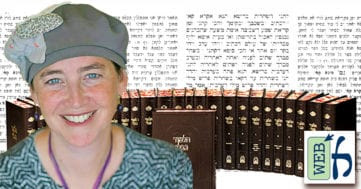Category Archives: Daf Yomi Highlight
DafYomi: Summary of Tmura’s 5th chapter
5th Perek Summary: “Keitzad Maarimin”: An embryo of an animal can be consecrated. A mother and embryo can be consecrated for two different sacrifices. A single “exchanged” animal can receive consecration for two different sacrifices, and when it receives a blemish, it is sold and the proceeds are split for the two sacrifices. What one utters has legal standing, especially in consecration where ones utterance is the only form of acquisition.
DafYomi: Summary of Tmura’s 4th chapter
4th Perek Summary: “Vlad Chatat”: There are 5 Chataot that are killed and one cannot derive any benefit from them:
- an embryo of a chatat
- an “exchange of a chatat
- a chatat whose owner died before it was sacrificed
- a chatat whose owner was atoned with a different chatat
- a chatat whose year has passed (needs to be a year old)
Similarly, money that was consecrated for a Chatat that had similar situations is destroyed by throwing it into the Salt Sea (Dead Sea).
In cases where the Chatat has some consecration (not fully), it grazes until it receives a blemish, sold and the money is used for a new sacrifice.
DafYomi: Summary of Tmura’s 3rd chapter
3rd Perek Summary: “Elu Kedoshim”: The laws of “exchange” of a sacrifice and of the embryo of a sacrifice are similar, except that an “exchange” does not make a further “exchange,” while an embryo can make another embryo (assuming it’s female).
The “exchanges” (and embryos) of voluntary sacrifices take on the identity of the original sacrifice: shelamim, olah, as well as firstborn and tithe.
The “exchange” of a todah is brought as a todah, but without the attendant breads.
Obligatory sacrifices that are “exchanged” (and the embryos) have a different law. An asham “exchange” is considered as if it had been invalidated is allowed to graze until it receives a blemish and then it is sold and with the proceeds a communal olah is sacrificed. The same procedure is done if someone mistakenly consecrated a female animal for an olah or asham (which only come from males). One brings an olah in place of the olah and a communal olah in place of the asham.
DafYomi: Summary of Tmura’s 2nd chapter
2nd Perek Summary: “Yesh Bekorbanot”: Differences between individual and communal sacrifices: Communal ones cannot be “exchanged”, there is no “responsibility” for them (i.e. to replace it, if the designated one was lost or stolen), they override the Sabbath and Festivals. However, the opinion of R’ Meir was accepted that the real differentiation for these differences is if the sacrifice has a fixed time or not.
The Law of the Sin-sacrifice that is killed, applies to specific blemishes of an individual’s sacrifice.
Consecration does not apply to a blemished animal, nor on a hybrid, a fatally-ill animal, “tumtum,” androgynous and caesarian.
DafYomi: Summary of Tmura’s 1st chapter
1st Perek Summary: “Hakol Memirin”: Any adult can perform an “exchange.” However, just the owner, one individual, with an animal sacrifice (not birds or grains), even if it’s blemished, upon any other animal, male or female, of different valid species. “Exchange” doesn’t work with limbs or fetuses. An “exchange” cannot make another “exchange,” however; there is no limit to the quantity of “exchanges” that can be made to or from.
Daf Berachot 3, Shabbat Aug 4, 2012
Pg 3: There are 3 ‘watches’ of the night. At every watch God roars like a lion, crying for the Temple he destroyed for His son’s sins.
Daf Berachot 2, Fri Aug 3, 2012
Pg 2: Whenever the sages instituted a deadline of midnight, it’s really until dawn – in order to safeguard from sin.
Daf Tmura 2-4, Fri-Sun 17-19/2/12
Daf 2: A person is prohibited from “exchanging” a consecrated animal (for the Temple) for a non-consecrated one. However, if he does, the second animal also becomes consecrated and the sinner is lashed.
Daf 3: R’ Yehuda in the name of Rav: One is liable for any prohibition of the Torah where one committed an act. If he did not commit an act (speaking is not generally considered an act), he is exempt. R’ Yosi the Gallilean: except for oaths, “exchanging” and cursing.
Daf 4: If one transgressed a prohibition that is connected to a commandment that one performs, he does not receive lashes for it.
Daf Erhin 31-33, Mon-Wed 13-15/2/12
Pg 31: The calculation of a year for real-estate purchases is determined by the day and the hour of purchase.
Pg 32: Definition of a “walled city”: at least 3 courtyards of at least 2 houses each surrounded by a wall from the times of Joshua son of Nun.
Pg 33: City design: A Levite city needs to be surrounded by 1000 ‘amot’ (about a foot) of greenery and 1000 ‘amot’ of fields & vineyards.


